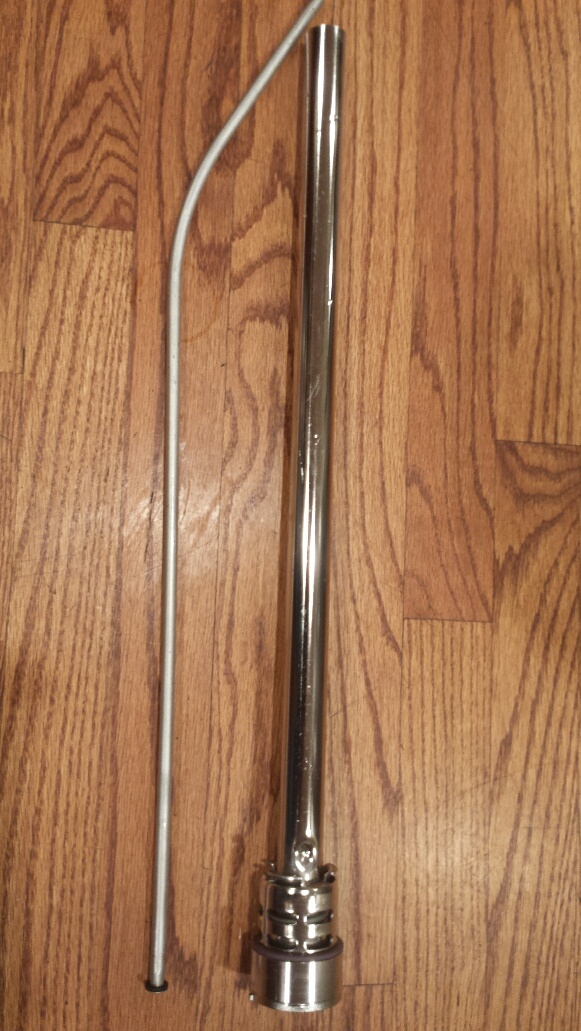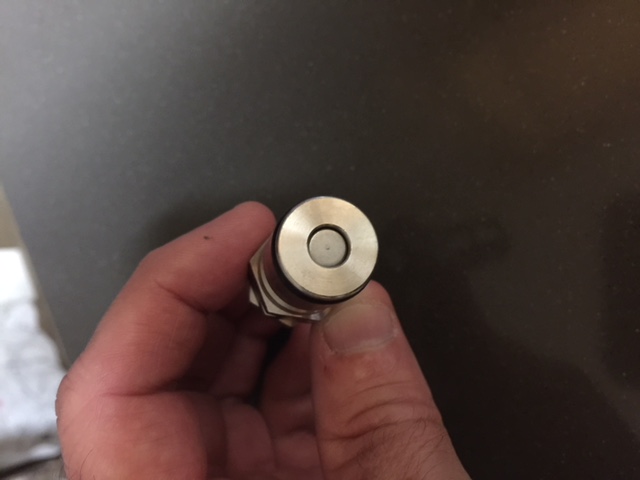Claiming that Sankes are "better in every way" and constantly implying that people must be stupid to keep using cornies pretty much ends any rational discussion on the topic...
Cheers!
Cheers!

For the sake of not being definitive I'll rephrase my statement and say better in most ways....I've never implied once that people are stupid let alone consistently. What I do say is I don't understand why people are always pushing cornies when there are better options. My opinion on a forum filled with opinionsClaiming that Sankes are "better in every way" and constantly implying that people must be stupid to keep using cornies pretty much ends any rational discussion on the topic...
Cheers!
Thanks for the info. Regarding your lines, did you just guesstimate the length or used a calculator?
I will be using the John Guest fittings. I ordered the shanks without the tail piece.
A lot of people say 1.5x regular beer line for Accuflex.
If I use .200 as the hose diameter with 8" from keg to tap, 12psi Mikes Calculator shows 14.2'. If i leave the diameter at .1875 the hose length would be 10.42'.
I don't think there is a calculator for the Accuflex hose so it appears to be trial and error. I'm leaning towards going with 15' or 16.5' and cut back as needed.





![Craft A Brew - Safale S-04 Dry Yeast - Fermentis - English Ale Dry Yeast - For English and American Ales and Hard Apple Ciders - Ingredients for Home Brewing - Beer Making Supplies - [1 Pack]](https://m.media-amazon.com/images/I/41fVGNh6JfL._SL500_.jpg)







Has anyone had a keg lid that when pushed down on the lid it pushes in towards the keg and leaks? I ordered two "B" grade kegs from KegConnection. On one keg the lid doesn't fit tight. Basically very little pressure locks the lid in place. The other one fits really tight and there is no "give" when pressed.
So i called KC and was told to adjust the two loops that the latch goes through. I assume one would take a hammer to "mash" in the two loops which should give less clearance making a tighter seal when the latch is closed.
Has anyone had to do this? And is it simply just taking a hammer and reducing the clearance?
For the sake of not being definitive I'll rephrase my statement and say better in most ways....I've never implied once that people are stupid let alone consistently. What I do say is I don't understand why people are always pushing cornies when there are better options. My opinion on a forum filled with opinions
I haven't had to do this.
What you can also try is to put a small disk (penny, dime, piece of flat plastic, whatever) underneath the legs of the bale so that they have a higher (than the lid) surface to push against.
One thing that I learned about keg lids is they need to be "set" with pressure for them to seal reliably. They may or may not seal with just the pressure of the bale.
One other thing: are you using keg lube on the big O-ring for the lid? If not, this will help it slide into place so it seals correctly.
Finally, places like this sell larger-diameter keg lid O-rings to help solve this issue.
I've moved on but since you feel the need to drag me back in. I'll give you a few reasons Sankes are better...and then I'm out.I can't recall anyone "pushing" corny kegs.
I'm not even tempted to try sankes, simply because what I have works terrifically, so what's the point?
There are reasons NOT to use sanke kegs.
Here's one: can't be easily stacked.
Here's another: Don't come in small sizes like 1.5, 2, 3 gallons.
Here's another: aren't readily available used at cheaper prices like corny kegs are available.
Here's another: can't be as easily sprayed out as corny kegs.
Here's another: new, they're more expensive than Torpedo kegs made of the same stuff.
Here's another: to switch requires changing the QDs to a sanke connector, costing more money.
Here's another: they don't come in two 5-gallon form factors, i.e., pin lock and ball lock. Torpedoes come in both form factors (and both are ball-lock connectors), which means the shorter ones will fit on my keezer's compressor hump while the taller style of the sanke keg, w/ connector, will not. According to http://www.beveragefactory.com/draftbeer/home_brew/kegs/KEG-165G-D_threaded_D_valve_keg.html the height is 23.25" and the D coupler and beer line will add 5.5" for a total of 28.75". Too tall.
Here's another: they're heavier than corny kegs according to this source here at Beverage Factory: http://www.beveragefactory.com/draftbeer/home_brew/kegs/KEG-165G-D_threaded_D_valve_keg.html If the "Specifications" tab is correct, they weigh....27.75 pounds empty. It's not that fun to lift a full corny keg into my keezer; can't imagine why I'd want to add another 20+ pounds.
*********
In short, Johnny, while you may feel they are superior there are clearly reasons--good reasons, rational reasons, fiscal reasons--for people to prefer corny kegs over sanke kegs.
In fact, when I look back over the list above, I wonder why anyone would even consider sanke kegs. Don't you?


Has anyone had a keg lid that when pushed down on the lid it pushes in towards the keg and leaks? I ordered two "B" grade kegs from KegConnection. On one keg the lid doesn't fit tight. Basically very little pressure locks the lid in place. The other one fits really tight and there is no "give" when pressed.
So i called KC and was told to adjust the two loops that the latch goes through. I assume one would take a hammer to "mash" in the two loops which should give less clearance making a tighter seal when the latch is closed.
Has anyone had to do this? And is it simply just taking a hammer and reducing the clearance?
May sound silly, but trying switching the lids between the two kegs.
I did but it was about the same. May try to find some new rubber feet or whatever you call them. The pieces that fit on the end of the latch legs.

I'm in the process of cleaning my kegs- taking the posts out to clean. How do you remove the dip tube? It seems to be in there pretty tight. Should I take a screwdriver to pry it up?
I swapped out the orings and lid seal and applied a thin coat of keg lube and it sealed- so far holding pressure.
The Inkbird 308 for around $35. Don't plug anything into the heat outlet..simple as that. Still works on the cold side and if you ever need heat you have the optionOk does anyone know if there is a single stage temp controller, kinda like the Johnson A419? I dont need the heat function- I have a JC that I use for my ferm chamber but looking for something cheaper and only single stage for my Keezer.
FWIW, i have a ITC1000 but don't like the fact when the cooling side turns off the heat turns on. I emailed Inkbird and was told that I had to wire the heating side. I believe I've read where there are some who did not wire the heating side. If anyone is only using the cooling side without wiring the heating side let me know how that is working.
[...]FWIW, i have a ITC1000 but don't like the fact when the cooling side turns off the heat turns on. I emailed Inkbird and was told that I had to wire the heating side. I believe I've read where there are some who did not wire the heating side.[...]